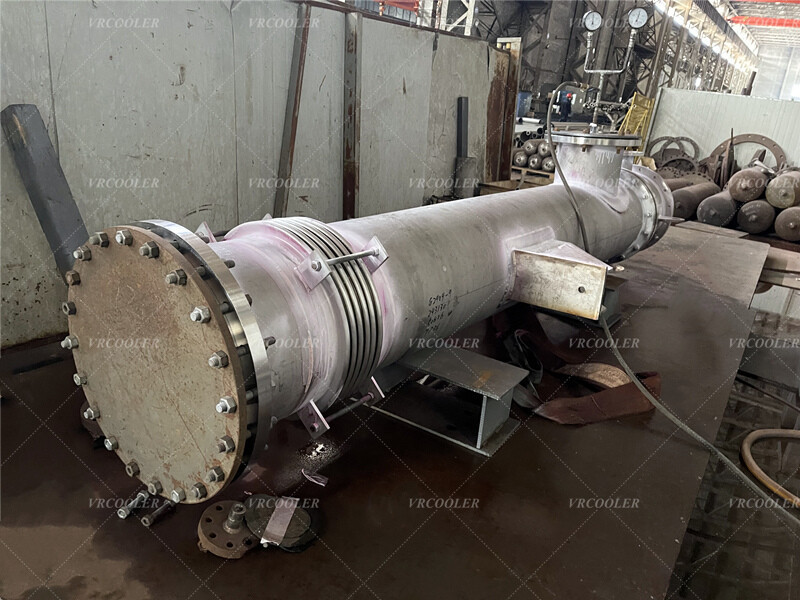Heat Recovery Heat Exchanger for Generator Sets
Shell and tube heat recovery heat exchanger is the most common type of structure. It mainly consists of a tube bundle and a shell. The tube bundle usually contains a number of tubes arranged in parallel, which are generally made of metal materials with high temperature resistance and good thermal conductivity, such as stainless steel or copper alloys. The interior of the tubes is used to circulate a medium (e.g., hot water or hot air), while the shell surrounds the tube bundle, and the space between the shell and the tube bundle is used for the passage of waste heat fluids (e.g., exhaust gases) produced by the generator set.
Tube plates are used to hold the tube bundle in place and to separate the fluids inside the tube and inside the shell. The ends of the tube are sealed by the tube plate, while the tube plate is provided with inlets and outlets for connecting to an external piping system, allowing fluid to flow smoothly in and out of the tube bundle. To improve heat exchange efficiency, the outer surface of the tube may have fins to increase the contact area with the waste heat fluid.
When a generator set is in operation, it produces high temperature exhaust gases or other waste heat fluids. These waste heat fluids carry a large amount of heat energy into the heat recovery heat exchanger. Inside the heat exchanger, there is a temperature difference between the waste heat fluid and the medium (e.g. preheated water or air) from which the heat is to be recovered.
Heat is spontaneously transferred from the high-temperature waste heat fluid to the low-temperature recovery medium. The waste heat fluid flows in the space between the housing and the tube bundle, transferring heat through the tube wall to the recovery medium inside the bundle.
Advantages of Heat recovery heat Exchangers in Generator Sets
Significant energy-saving benefits
Able to recover a large amount of waste heat generated by the generator set for preheating, heating and other purposes, reducing the consumption of other energy sources. According to statistics, the effective use of heat recovery heat exchanger can improve the comprehensive energy utilization of the generator set up to 10% - 30%, greatly reducing the cost of power generation.
Reduce environmental pollution
As a result of reducing the use of other energy sources (such as fossil fuels), the corresponding reduction in greenhouse gases and other pollutants emitted. For example, after preheating the combustion air with recovered heat, combustion is more complete, reducing emissions of incomplete combustion products such as carbon monoxide and particulate matter.
Improved equipment economics
Although the heat recovery heat exchanger itself requires a certain amount of investment, in the long run, the economic benefits brought about through energy saving and emission reduction far outweigh the initial investment in the equipment. Moreover, a properly designed heat recovery system can also extend the life of other equipment in the generating set (e.g., boilers) because the preheated water and air have relatively little thermal shock to the equipment.


